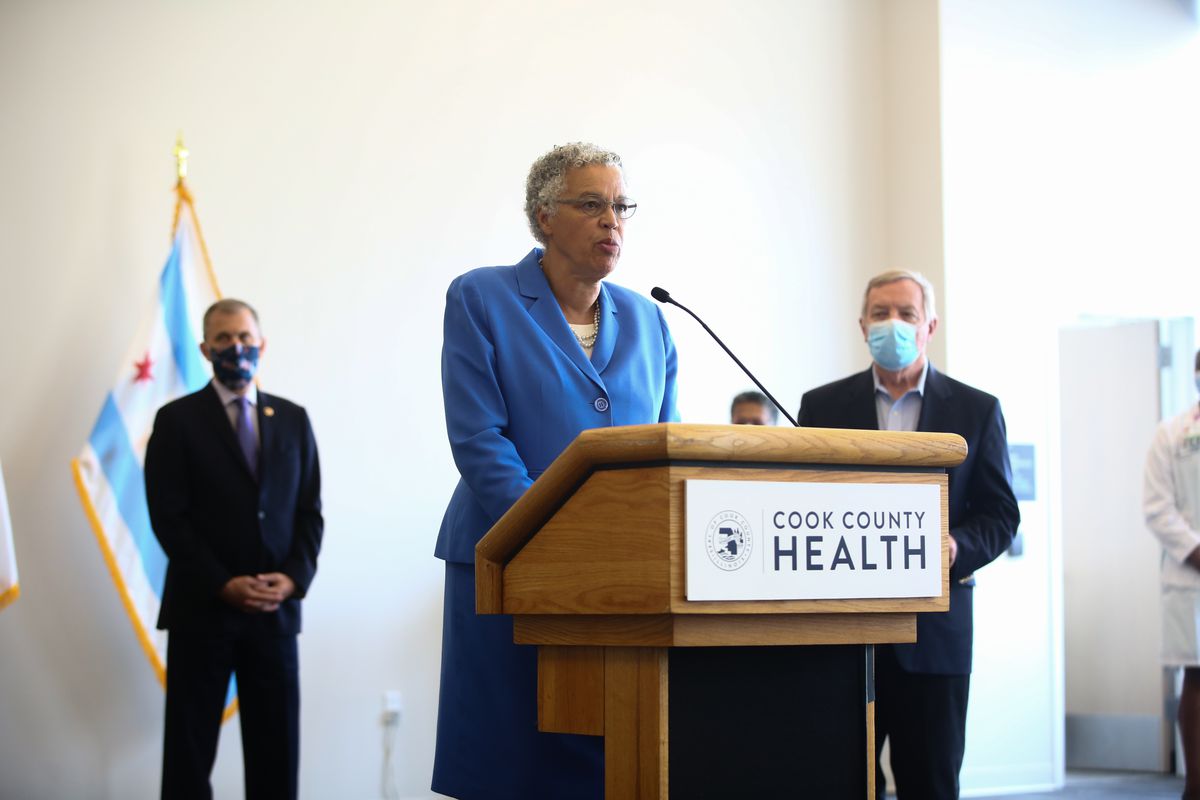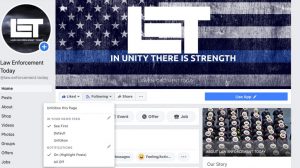Latest
Suburban Cook County warned to wear masks, wash hands, distance — or face crackdown: ‘We are at a crossroads’
Nearly a third of all Illinois counties, including Will and suburban Cook, are now at a COVID-19 “warning level” amid the state’s summertime coronavirus resurgence, public health officials announced Friday.
Cook County Board President Toni Preckwinkle said officials aren’t scaling back business operations any further for now, “but we are at a crossroads.
“We need everyone to wear a mask, watch their distance, and wash their hands consistently to slow the spread of COVID-19 so we don’t lose the gains we have made,” Preckwinkle said in a statement.
The Illinois Department of Public Health slapped the “warning level” label on 30 of the state’s 102 counties — up from 20 last week — as officials announced an additional 2,149 new cases of the virus were confirmed statewide.
That’s the eighth time this month that 2,000 or more new cases have been logged in a single day, which hadn’t happened previously since mid-May when the state was suffering through its initial pandemic peak.
Read the full story from Mitchell Armentrout here.
News
8:51 a.m. Ballhawks at Wrigley Field stay on the lookout
Wrigleyville looks different this summer than in years past. Normally, in the hours before a perfect August night game, you’d see armies of Cubs fans hopping from Sluggers to The Cubby Bear to Murphy’s Bleachers before packing 40,000 deep into Wrigley Field. Not so much this year.
Peer behind the left-field bleachers to the corner of Waveland and Kenmore Avenues, though, and a familiar sight remains: A dozen or so people scattered around the intersection with gloves and lawn chairs, eyes cast toward the top of the wall in hopes that they’ll be the first to spot a freshly smacked home-run ball sailing over.
The pandemic has forced a shortened MLB season and kept fans out of Wrigley, but for the tried-and-true ballhawks, the routine hasn’t changed much, albeit it now is done with masks: Post up for batting practice about three hours before the first pitch, say hi to the regulars and catch any balls that come your way.
Read the full story from Sam Kelly here.
7:25 a.m. Health agencies’ credibility at risk after week of blunders
WASHINGTON — The credibility of two of the nation’s leading public health agencies was under fire this week after controversial decisions that outside experts said smacked of political pressure from President Donald Trump as he attempts to move past the devastating toll of the coronavirus ahead of the November election.
The head of the Food and Drug Administration grossly misstated, then corrected, claims about the lifesaving power of a plasma therapy for COVID-19 authorized by his agency. Then the Centers for Disease Control and Prevention quietly updated its guidelines to suggest fewer Americans need to get tested for coronavirus, sparking outrage from scientists.
Trump’s own factual misstatements about COVID-19 are well documented, but the back-to-back messaging blunders by public health officials could create new damage, eroding public trust in front-line agencies. That’s already raising concerns about whether the administration will be forthcoming with critical details about upcoming vaccines needed to defeat the pandemic.
“I do worry about the credibility of the FDA and CDC, especially at a time when the capacity of the federal government to advance public health should be a priority for all policymakers,” said Daniel Levinson, former longtime inspector general of the Department of Health and Human Services, which oversees both the FDA and the CDC.
New Cases
Analysis & Commentary
7:29 a.m. Pritzker did not handle Metro East pandemic mitigation well
When Gov. J.B. Pritzker announced the state COVID-19 “mitigation” plan for the Metro East on Aug. 16, he said it was done in conjunction “with local officials in the Metro East region and across the border in St. Louis.”
Last week, though, the governor admitted the cross-border arrangement to try to contain the virus’ spread was a “mistake.”
Man, was it ever.
Instead of sticking to the state’s original mitigation plan, which would’ve included things like reducing indoor restaurant capacity and shutting down all indoor bar service, Pritzker only ordered bars and restaurants to close at 11 p.m., which was in line with what St. Louis was planning at the time.


















